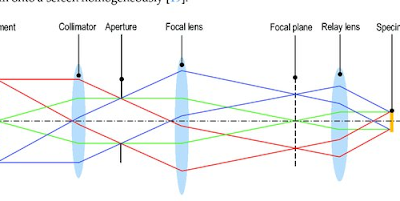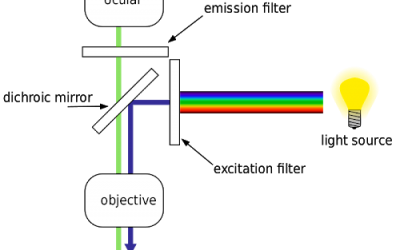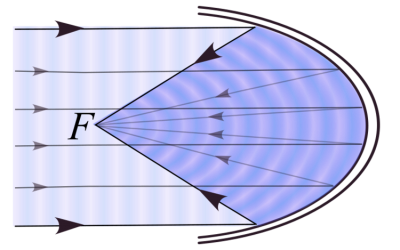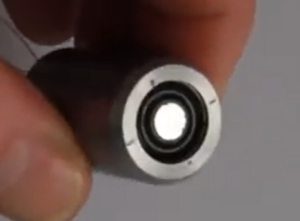Previous posts have reviewed different techniques for beam homogenization as well as the difference between spot size and beam angle. This post will review a method for beam shaping using Powell Lenses. Powell lenses are lenses that create a straight laser line by...
Blog
Calcium Fluoride Glass: An Overview
by Victor Argueta | FAQ, lens design consulting, OFH, Optical Components
The choice of glass is a fundamental part in the optical design process. This is especially true for IR and thermal optics materials. In this article, we will review Calcium Fluoride (CaF2), an interesting glass that has a wide range of applications. Before we start,...
Beam Splitters: Explained
by Victor Argueta | FAQ, Optical Components
Beam splitters are a fundamental element in optical systems. Beam splitters are, in essence, optical components used to divide a single light source (usually a laser) into two separate beams. The more common kind of beam splitters (the kind that you can find in most...
Bidirectional Scattering Distribution Function
by John | Uncategorized
As optical engineers, we are in charge of more than just the design and implementation of optical systems for specific applications: we often need to evaluate optical systems’ performance or to assess the quality of optical components. To do these assessments, we...
Conoscopic Lens Design
by Victor Argueta | illumination, illumination lens design, lens design
A conoscopic lens is an instrument that can be used to measure the angular distribution of a light source. Its use is quite different from a lens, as in photography. An image created by a conoscopic lens resembles that of a fisheye lens. That is a...
Koehler Illumination
by Victor Argueta | FAQ, lens design consulting
When designing any optical system, an optical engineer needs to consider how illumination will be used: specifically, how the illumination could affect the way the image is created. If not carefully designed, some illumination systems may create a kind of...
Tessar Lens Design
by Victor Argueta | FAQ, lens design, optical design
Among the many lens design configurations, one of the most common lens optical layouts is the Tessar Lens. This layout was created by Paul Rudolph in 1902 for photographic lenses. In the golden age of film photography, the...
M squared and designing laser beam optics
by Victor Argueta | FAQ, optical design
There are different ways to calculate the quality of a laser beam. In general, we want our laser beam to be as close to a theoretical Gaussian Beam as possible. The question then is how do we measure the profile of our beam and how do we compare it against our ideal...
Confocal Microscope Design: Explained
by Victor Argueta | 3D, FAQ, optical design
Confocal microscopy is a type of microscopy that uses a focused laser beam to illuminate a sample and a pinhole aperture to eliminate out-of-focus light, resulting in high-resolution images with improved contrast and clarity. The name "confocal" refers to the use of a...
Projection Lens Design
by Victor Argueta | illumination lens design, lens design, optical design, Zemax
Projection systems are one of the most common consumer optical devices (probably second to photographic systems). They allow us to view images on a screen (usually) by magnifying and projecting them at distances from a few centimeters to several meters away...
Fisheye Lens Design
by Victor Argueta | FAQ, illumination, lens design consulting, optical design
Anyone who has peaked through a hotel room peephole has used a fish eye lens. Usually, the fish eye lens has a very short focal length (less than 15mm for a 35mm-size image sensor), but a large field of view (FOV). The latter can be as large as...
Parabolic Mirror Design
by Victor Argueta | FAQ, optical design, optical engineering, optics definitions
Parabolic mirrors are optical systems that are used to collect or distribute energy. They have a wide range of applications from solar collectors for water heating systems to microscopes and telescopes, and everyday flashlights. The most common way ...
Infinity Corrected Microscope Design
by Victor Argueta | optical design
Traditional Microscope systemTraditional microscope systems consist of two main optical elements: a microscope objective and an eyepiece. The microscope objective is placed close to the sample that we want analyzed. The distance between the objective lens and...
Non-sequential ray tracing
by Victor Argueta | illumination, optical design
When doing optical simulations using a program like ZEMAX, we can choose to do our simulations using two modes: sequential and non-sequential optics. Sequential optics, as the name indicates, follows the optical path of light as it goes from one surface to the next....
Apochromatic Lens Design
by Victor Argueta | FAQ, lens design, lens design consulting, optical design, optics definitions
In an achromatic lens design, we optimize such that two wavelengths, usually red (590nm) and blue (495nm), focus on the same image plane. This is done to reduce chromatic aberration. In this article, we’ll talk about a similar design type called an Apochromatic lens...
Understanding Free Space Optical Communication Design
by Victor Argueta | FAQ, optical design, optics definitions
A previous post discussed underwater optical design. This week, we will review the diametrical opposite application - free-space optical communication (FSO). As with underwater optical design, one of the challenges facing FSO is the optical signal propagation...
Optical Design Considerations for Underwater Optics
by Victor Argueta | FAQ, illumination, lens design consulting
The design of an underwater camera lens can be challenging due to the large number of variables at play. As with every optical system design, the selection of cameras, lenses, housings, and operational parameters greatly influences the performance of the complete...
Unlocking Risley Prisms: Precision in Optical Steering | OFH
by Victor Argueta | FAQ, optical design, opto-mechanical design
Introduction Previous posts have explained reflective, anamorphic and dispersive prisms and their use in optical systems. Today we will explain a prism configuration called Risley Prism. A Risley prism is actually two wedge prisms close to each other that can be...
How does a light pipe overmold work?
by John | illumination, illumination lens design, LED
Simple method to generate a light-pipe from a keyboard overmold
How the Abbe Sine Condition impacts optical designs
by Victor Argueta | FAQ, lens design, optical design
When making first order optical design calculations, most engineers use parameters based on paraxial (or ideal) systems. That is, lenses in which the chief rays are very close to the optical axis. However, that’s not always the case, and as we move...






















